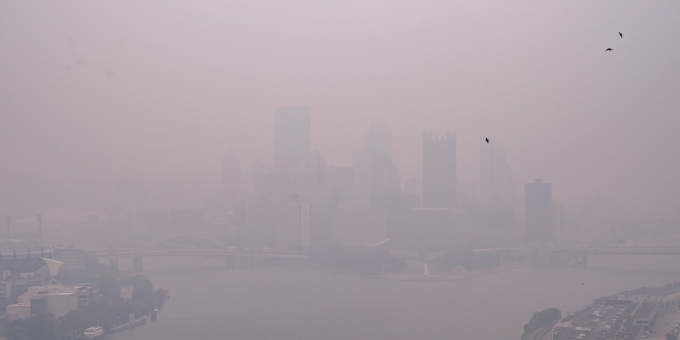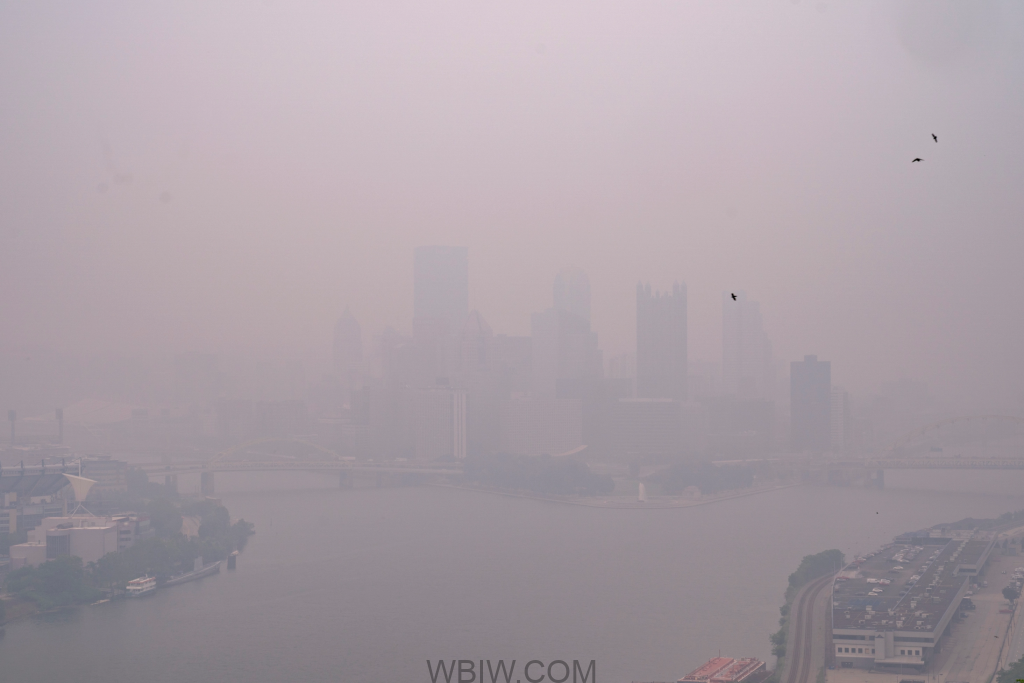
INDIANA – More than a third of the United States population is under air quality alerts due to smoke originating from Canadian wildfires.
Officials are urging people to take safety precautions weeks after similar wildfire smoke blanketed the Northeast.

Over 120 million people are under the alerts and some of the worst air quality, which is classified as “very unhealthy,” is centered over the Chicago, Cleveland, Detroit, and Indianapolis metro areas. Some improvement in the air quality is expected on Thursday, particularly over the Great Lakes area, where rain and storms will help cleanse the air.

Photo by Beatriz Bajuelos Castillo.
Canada is seeing its worst fire season on record as hundreds of blazes rage across the country – with more than 250 burning “out of control,” according to the Canadian Interagency Forest Fire Centre. Several Canadian cities also recorded unhealthy air quality index readings Wednesday, according to IQAir.
Some improvement is expected today, particularly over the Great Lakes area, where rain and storms will help cleanse the air. Canada faces almost 500 fires raging across the country according to fire officials.

Canada has had a dramatic start to wildfire season, with at least 19,027,114 acres already charred across the country. Wildfire activity in Canada typically peaks from June to August, leaving more than half of the peak season still to come.

As a result of the unprecedented start to the wildfire season, this year has become the worst fire season on record, surpassing the previous benchmark set in 1989 for the total area burned. In 1989, at least 18,254,317 acres were burned in the country, according to fire statistics from the Canadian Interagency Forest Fire Centre.
Warm and dry conditions are kindling for wildfires. Much of Canada, like the rest of North America, has experienced record heat and drought recently as climate change continues to warm the planet. Dry, hot weather also breeds more lightning which is believed to have started the fires.
Harsh weather conditions are fueling these fast-spreading fires, making them extremely difficult to combat.
The country is currently at “national preparedness level 5,” meaning Canada has fully committed all its national resources to mobilize the fight against the fires. Firefighters from other countries including the US, Australia, New Zealand, and even South Africa are also helping fight the blazes.
Chris Stockdale, a wildland fire research officer with the Canadian Forest Service, reported international liaison officers” from Australia, New Zealand, and South Africa are flying in to help fight the fires.
Readers in the US can click here to track the air quality where they live. The map is updated every 30 minutes with new data.



